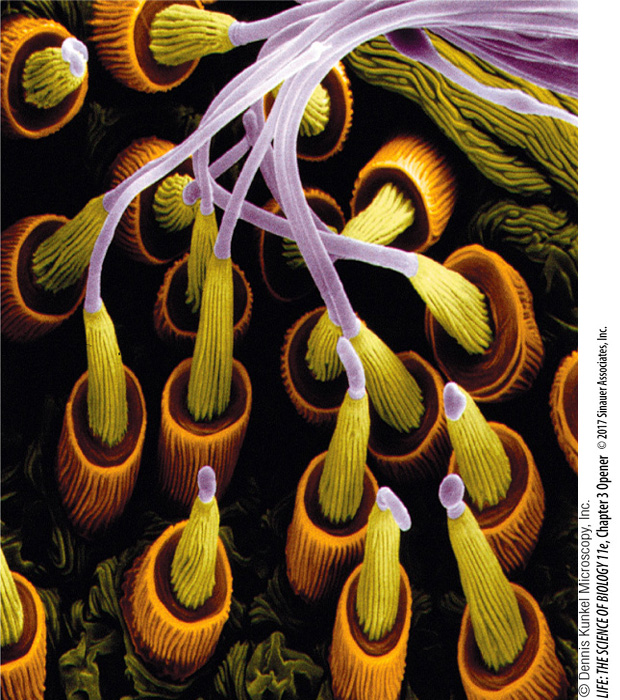Chapter Introduction
Proteins,
Carbohydrates,
and Lipids

investigating life
Weaving a Web
A spider web is an amazing structure. It is not only beautiful to look at, but an architectural wonder serving as the spider’s home, its mating place, and its way to capture food. Consider a fly that chances to interact with a spider web. The fibers of the web must slow down the fly, but they cannot break, so they need to stretch to dissipate the energy of the fly’s movement. The fibers holding the fly cannot stretch too much; they must be strong enough to hold the web in place. Web fibers are far thinner than a human hair, yet they are very strong. The fibers can also be long; for example, the Darwin’s bark spider makes strands up to 25 meters long.
Chemical investigations reveal that spider silk is made of variations on a single type of large molecule called a protein. Proteins are polymers: long chains of individual smaller units called amino acids. The proteins in spider silks have characteristic structures and amino acid compositions that determine particular functions. Proteins in the stretchy web fibers have amino acids that allow them to curl into spirals, and these spirals can slip along one another to change the fiber’s length. Another kind of spider silk is the dragline silk, which is less stretchy and used to construct the outline of the web, its spokes, and the lifeline of the spider. The proteins in these strong fibers are made up of amino acids that cause the proteins to fold into flat sheets with ratchets, so that parallel sheets can fit together like Lego blocks. This arrangement makes these fibers hard to pull apart.
Just how strong is spider silk? A popular series of films features the fictional character Spider-
What are practical uses for spider silk?